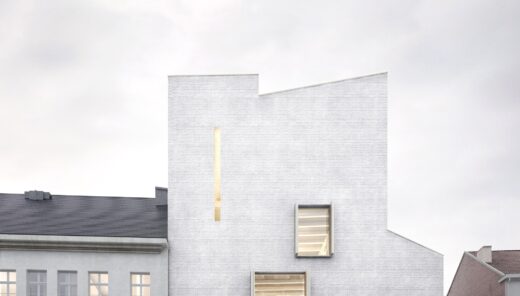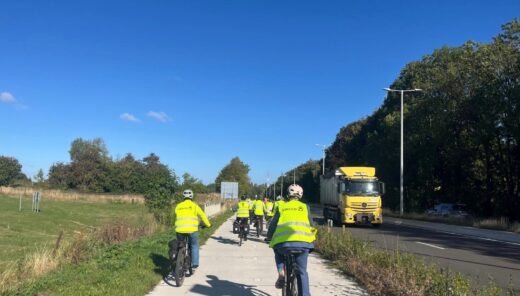Sweco and VLM investigate how rural projects can enhance biodiversity
Biodiversity and landscape quality are crucial for the ecological health, economic resilience, and social well-being of our countryside. In a new study, Sweco examined the impact of LEADER and other rural projects for the Flemish Land Agency (VLM), and formulated recommendations for frameworks, scaling opportunities, and lasting effects of projects.
Within Flemish rural policy, biodiversity and landscape quality are core components. However, there are still many challenges, such as fragmentation, intensive farming practices, climate change, and pressure on open spaces. In the study “How Can We Bring More Biodiversity to the Landscape?” Sweco researchers focus on the bottom-up method, where local action groups take initiatives at the local level. This fits perfectly within the LEADER programme of the European Union.

LEADER: developing the rural economy together
LEADER is a European programme that has been committed to the development of rural areas through a participatory, bottom-up approach since the 1990s. In Flanders, this is done through Local Action Groups (LAGs), where local councils, agricultural organisations, nature associations, and other societal actors collaborate. They establish a local development strategy and guide projects that address local needs.
After 30 years, Europe has 2500 LAGs active in 50% of the rural areas in the European Union. Flanders has 15 LEADER areas (see map). Within each area, project calls are launched for which residents, farmers, entrepreneurs, and local authorities can submit proposals that:
- Enhance the quality of open spaces and the landscape
- Improve biodiversity
- Improve soil and water quality
- Strengthen regional identity
Selected projects receive support through LEADER subsidies.
Image: © VLM
This report provides a solid basis to further strengthen the LEADER operations in Flanders. At the same time, the study raises questions for which we currently have no ready-made answers. For example, what role can innovative and short-term projects play in Flanders’ transition objectives towards stronger biodiversity and enhanced landscape quality? This is a point of focus in the further development of the rural pact and the preparations for the new CAP.
Kevin Grauwels, Head of Rural Policy at VLM
25 rural projects under the microscope
In the report, our experts examined 25 rural projects in Flanders. They applied the RE-AIM evaluation framework, looking at Reach, Effectiveness, Adoption, Implementation, and Maintenance. Our researchers partly used AI for this. Sweco’s proprietary AI system, SwecoGPT, assisted in processing the enormous amount of data, sometimes bringing forward aspects different from the human researcher.

Additionally, Sweco organised workshops with project initiators, LEADER coordinators, and VLM for further in-depth analysis. For the initiators themselves, the workshops proved particularly interesting for self-evaluation and knowledge exchange. All results are neatly compiled in a separate publication, providing an important inspiration source for initiators of future rural projects.
The goal of the study is to map success factors and bottlenecks to draw lessons for new initiatives: from a strategic perspective, for policy, in the framework, and practically for the initiators.
To support VLM and the rural actors’ facilitators even better, we went beyond delivering an inspiration booklet. We also reworked each of the five practical tips from the booklet into an animated film. These films can spark internal discussions within local action groups or project groups. This way, we increase the accessibility of the messages, which are offered in bite-sized pieces.
Sara Geets, Landscape and Public Space Expert at Sweco
Involvement and collaboration are key to success: some findings
Utilising citizen monitoring and citizen science
There is a lack of incentive for reporting on biodiversity and landscape quality, often due to fear of additional obligations. As a result, clear objectives and measurable indicators are missing. Citizen monitoring and citizen science have a lot of potential in this regard: they involve volunteers in measuring project impact, strengthen the bond with the community, and support the achievement of objectives. This lays a solid foundation for future follow-up and aftercare.
Aligning measures with the landscape and the needs of agricultural enterprises
At the farm or plot level, it is feasible to determine a biodiversity value. At the landscape level, this is more challenging, while a coherent network of habitats and corridors is crucial. Successful projects carefully align their measures with the characteristics of the landscape and the needs of agricultural enterprises.
Promoting collaboration through personal contact and dialogue
Projects that focus on personal contact, open dialogue, and active listening achieve more progress in terms of biodiversity and landscape quality. This requires time and effort, especially in projects where diverse interests converge and quick results are expected.
Overig nieuws

From Smooth Snake to Deer: Ecovalley Zwarte Berg Rolls Out the Green Carpet
Read more

Design Museum Ghent: a fossil-free museum of the future
Read more

Cyclostrade E411 enhances multimodal mobility in Walloon Brabant
Read more
